Christmas plants for indoor color: 10 beautiful picks to brighten your home
These are the best Christmas plants to provide festive cheer, plus tips on how to care for them
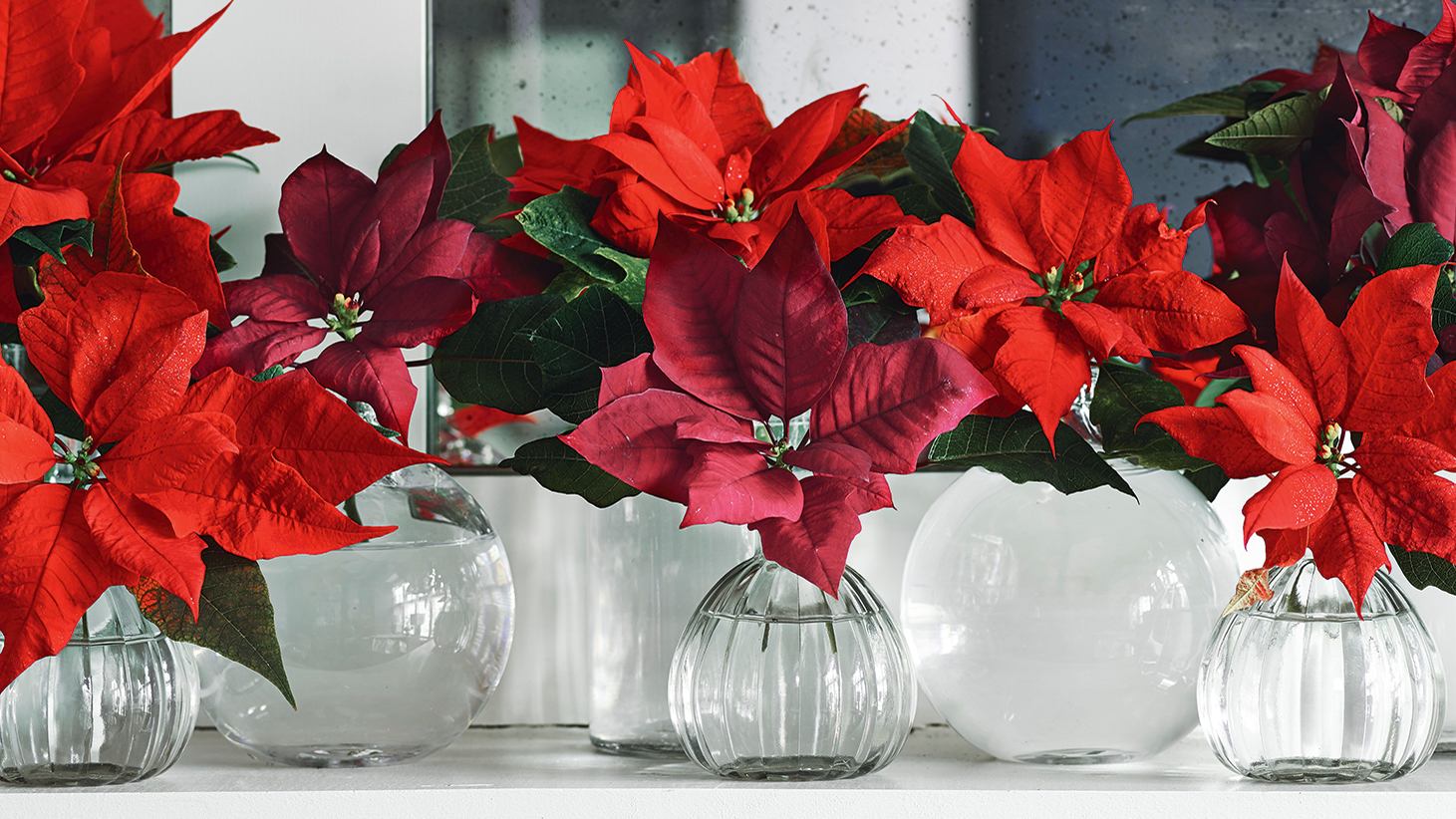

There are many Christmas plants to choose from that will brighten up your home. Yes, there are the traditional poinsettias we all know and love, but how about trying something a little different this year, too?
As with all of the best indoor plants, with a little bit of TLC your Christmas plants will thrive. Some will keep going strong even beyond the holiday season. And some varieties, including poinsettias, amaryllis, and Christmas cactus, can be coaxed into blooming again next year.
To help you get started with your search for Christmas plants, we've picked our favorites below for you to choose from. Plus, there are plenty of expert tips to take on board, including how to find the right spot in your home for them and how often to water.
10 beautiful Christmas plants for your festive decor scheme
From traditional beauties to stylish succulents, this mix of Christmas plants will definitely take your indoor decor up a level.
1. Poinsettia
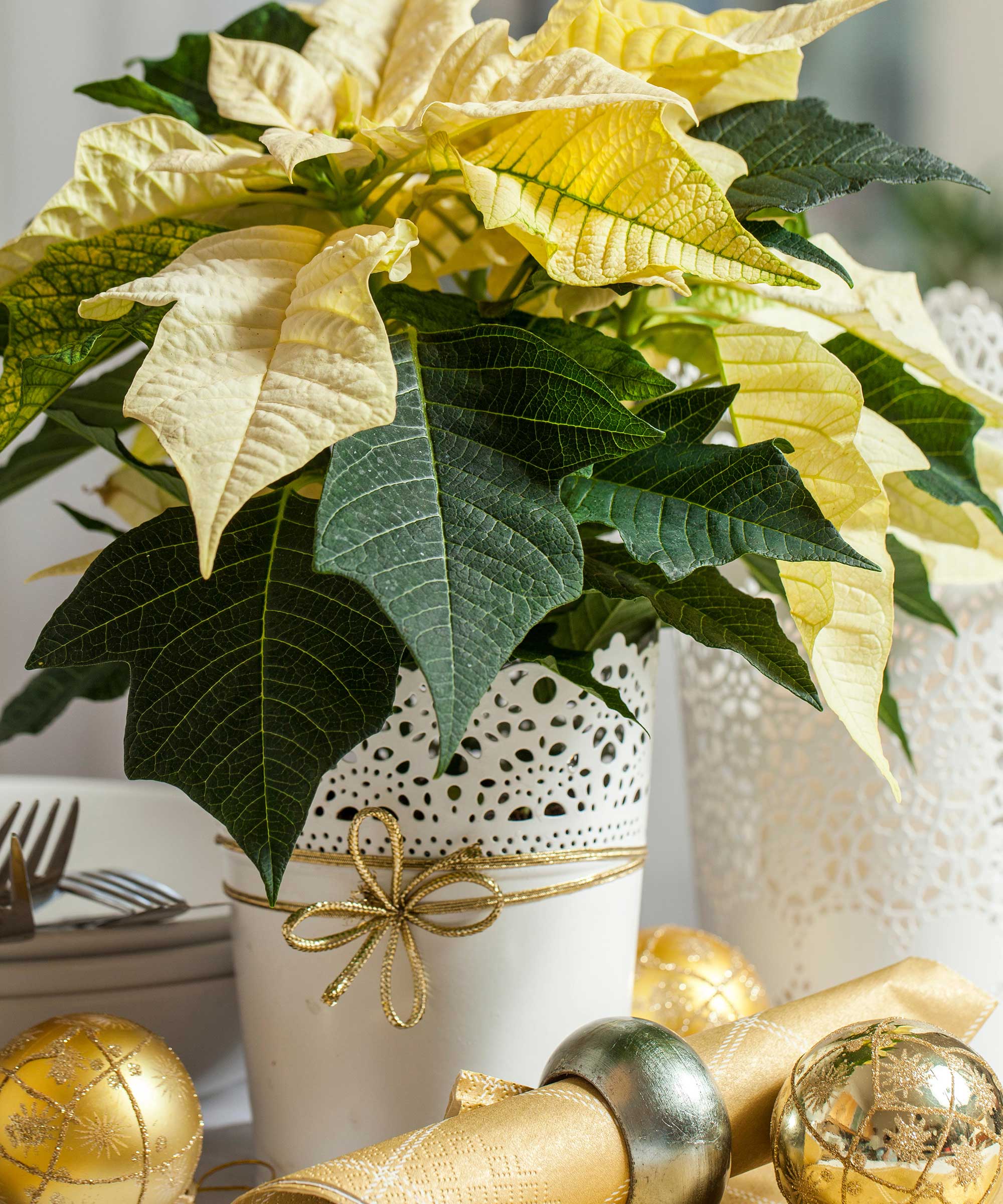
Go for a modern take on the classic red poinsettia with a cream variety
Poinsettias come in shades of pink, white, and classic red, as well as the 'glitter' variety which is red with cream flecks. The best type for your scheme depends on personal choice, but we adore the pastel tones of the cool cream varieties for a modern twist on the traditional.
Learning how to care for a poinsettia isn't too tricky. They need a light spot – but not bright sunshine – and like the soil slightly damp. A little diluted houseplant food once a fortnight should be enough to keep them happy. If the leaves turn yellow and drop off, move it to a cooler spot, and it should soon perk up again.
The stems of poinsettias make good cut flowers. Either cauterize the cut end for a few seconds in hot water or dust it with powdered charcoal to stop the flow of white sap. Poinsettias from last year will stay green if exposed to artificial light from early September. They need shortening days to form colored bracts and the bead-like flowers within them.
2. Anthurium

These plants will add drama to an indoor scheme
If you're looking for show-stopping structure, then anthurium could be one of the best indoor Christmas plants for you.
'Also called the "Flamingo Flower", it has bright red heart-shaped spathes,' explains the team at Squire's Garden Centres. They are waxy in texture, with yellow 'tails'. You can also find varieties in white and pink.
They are best placed somewhere with bright but indirect light, but be sure to keep them out of reach of children or pets as they are toxic. They don't need much watering throughout winter and should be kept above temperatures of 59°F (15°C).
Add a fertilizer that's high in phosphorus during the growing season of spring and summer and you can continue to enjoy your plant all year-round as part of your indoor garden ideas.
3. Hyacinths
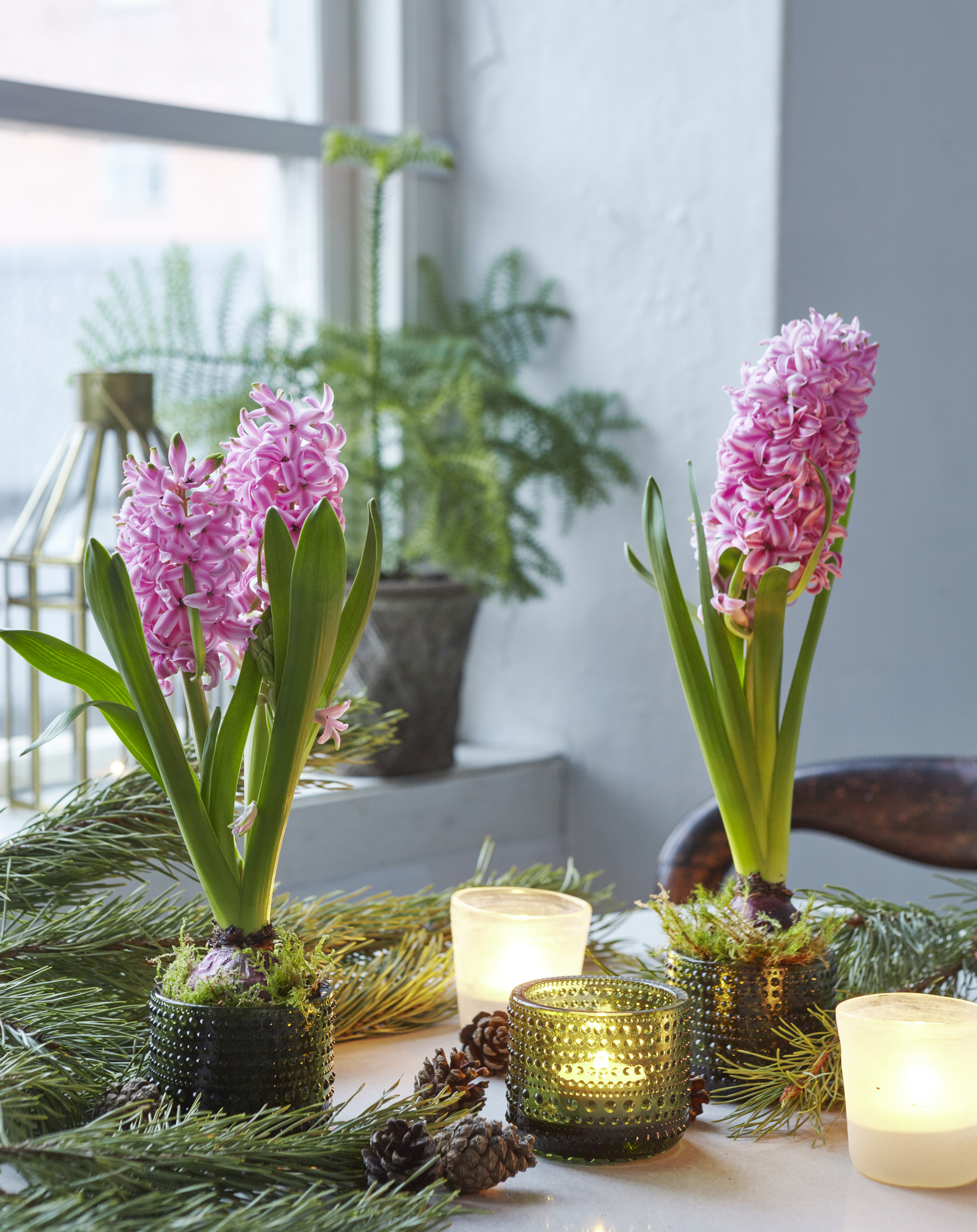
Add a splash of color and scent with vibrant hyacinths
Pink hyacinths get a modern makeover planted in hammered glass tea light holders for an elegant indoor arrangement – but dreamy white or indigo-blue types are just as stunning. Whatever you choose, they will fill the house with their beautiful scent for weeks.
Choose bulbs that are specially prepared for forcing if you want flowers in time for Christmas. Prepared hyacinths are bred to bloom much earlier and it's this variety that is grown mainly as indoor plants. 'After flowering, all indoor hyacinths can be planted in the garden where they will flower the following spring,' says Squire's Garden Centres. You can find lots more tips on how to plant hyacinth bulbs – both indoors and out – in our guide.
Place your indoor hyacinths somewhere cool – no more than 55.4°F (13°C) – or the stems can flop, and flowers will fade quickly.
4. Amaryllis
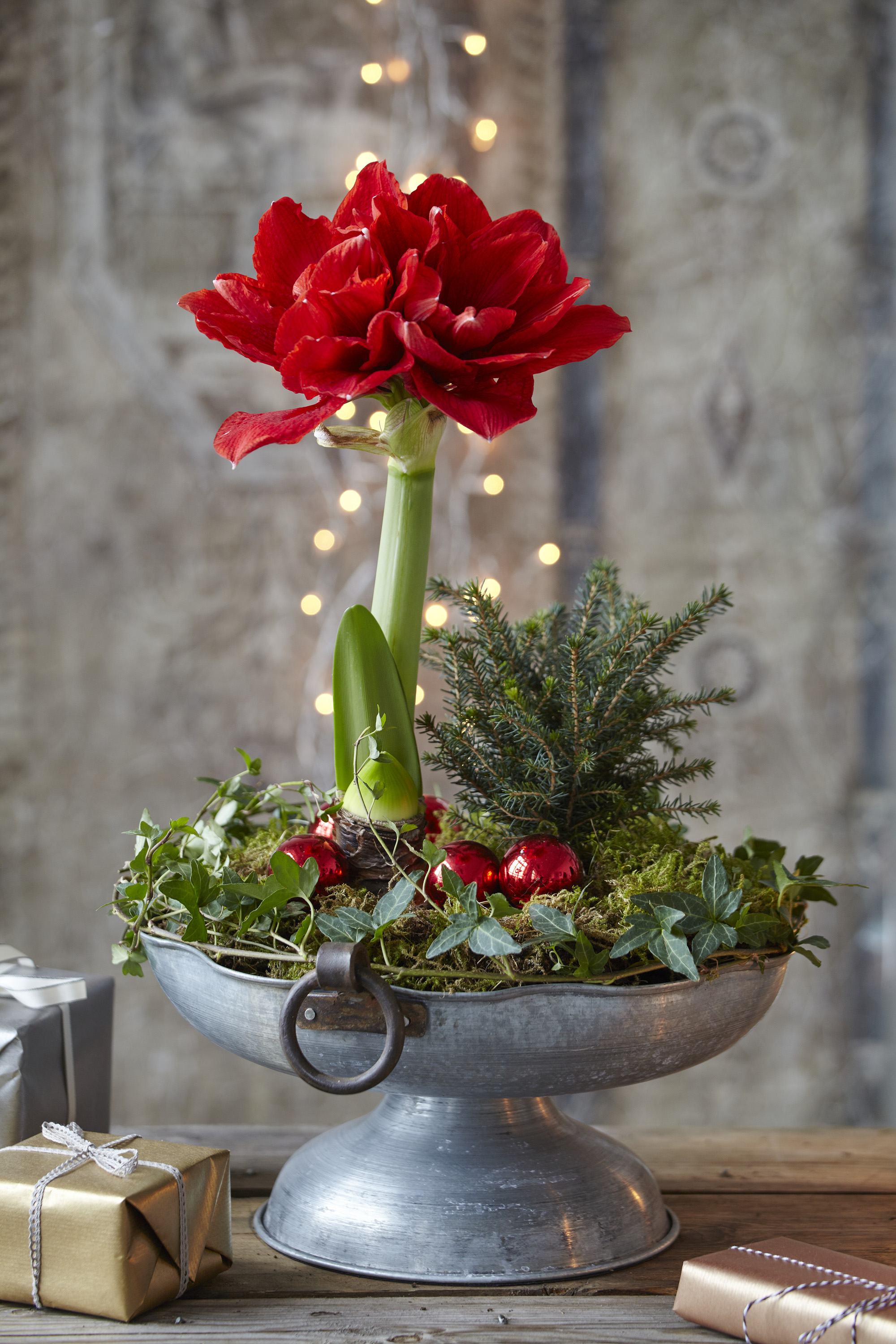
An arrangement of amaryllis makes a striking Christmas display
The beautiful showy blooms of amaryllis (also known as hippeastrum) look festive in a simple yet modern arrangement.
Their cool colors and structured appearance make a strong statement. If you like drama, these lush blooms come in strong velvety shades of bold crimson, magenta pink, and deep maroon.
Position them in a well-lit spot and water sparingly until the new leaves develop, then more regularly once they do. Turn the pot regularly to prevent the flower stalk from leaning towards the light.
5. Moth orchid

You can't beat the showy blooms of moth orchids for a stunning centerpiece
One of the most popular ornamental houseplants around, orchids add a showy decorative display at this time of year. They come in the traditional Christmas colors of white, red, and green – which is handy when it comes to coordinating a look – as well as stunning shades of pink and purple.
Moth orchids (also known as phalaenopsis) are great all-rounders, producing long-lasting flowers and coping well in centrally-heated homes. You can learn all about how to grow orchids in our dedicated feature.
6. Paperwhite narcissus
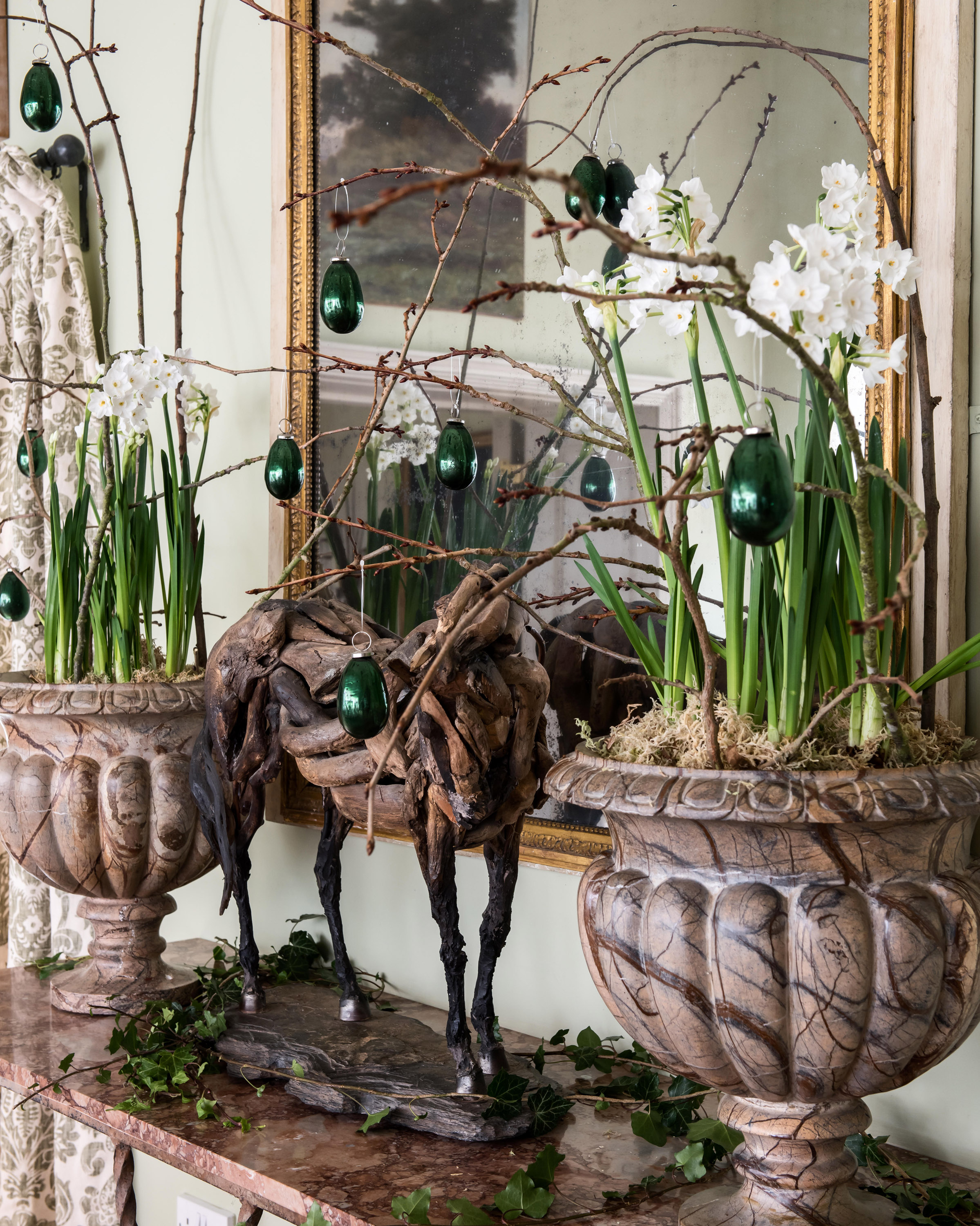
Fill your home with the beautiful scent of paperwhite narcissus this Christmas
Pretty pots of miniature spring bulbs can be used to create some great Christmas displays. The traditional paperwhite narcissus is a well-loved choice for its delicate look and sweet scent.
They work well as a houseplant as they come out far earlier than the garden variety – simply learn how to force bulbs indoors and you'll have blooms throughout the holidays. Plant bulbs closely together in pots filled with bulb fiber. Then, put them in a cool, dark place until the petals burst out, adding some bare twigs for sculptural interest.
7. Christmas cactus
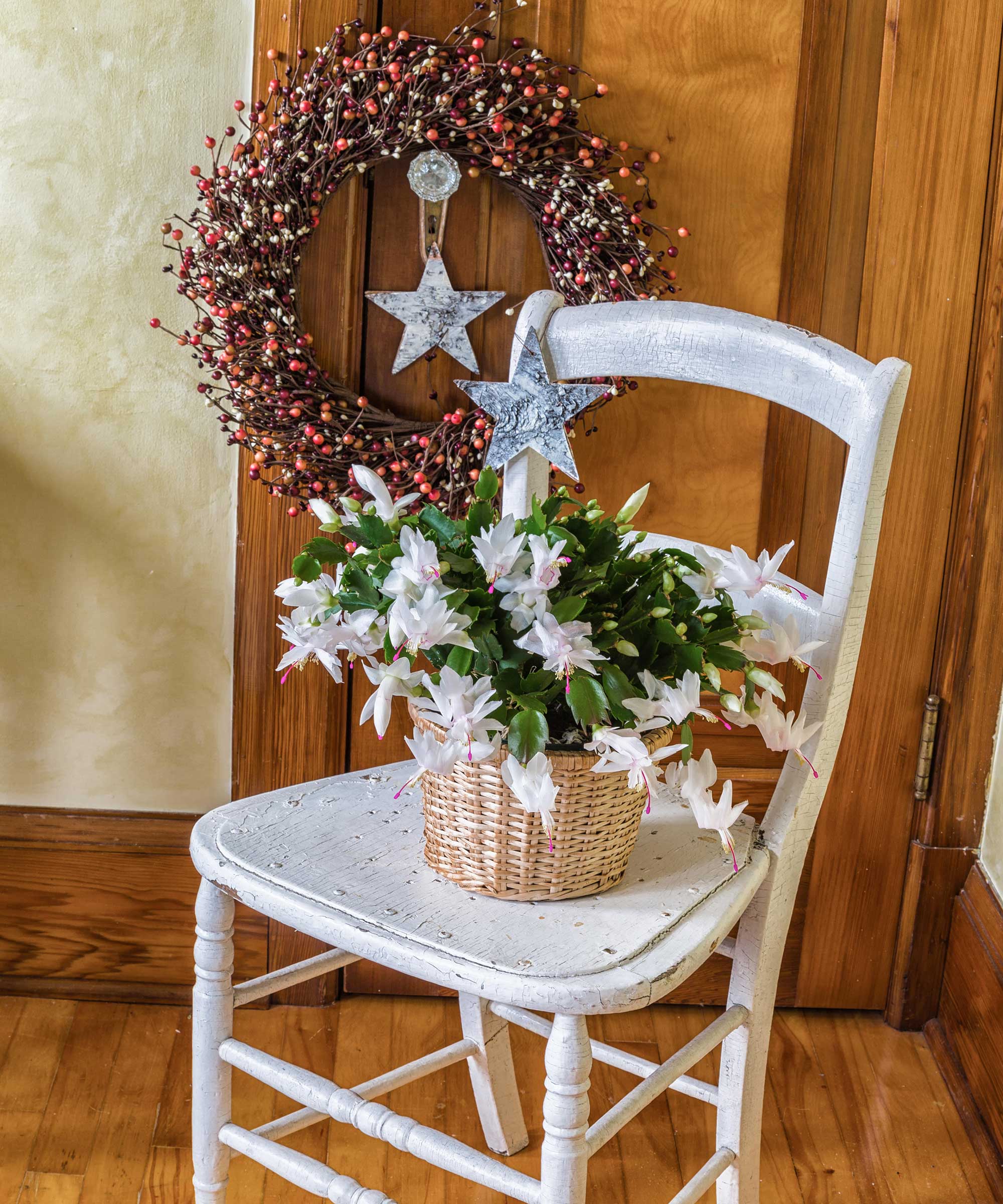
A Christmas cactus is a pretty succulent that will pep up the corners of your home
Naturally flowering in December, these are indestructible little plants with gorgeous blooms in pink, red and white that can flower from September right through to January.
They are ideal for humid environments such as kitchens and bathrooms because, in the wild, they grow in tropical rainforests. As well as a humid spot, they need to be somewhere warm. Keep the pot in a gravel-filled saucer and add water until it touches the base. Then keep it topped up for a stunning seasonal display.
Christmas cacti don’t take kindly to being moved into different temperatures once the flower buds have formed. If you do move them, it can cause premature bud drop. You can find out lots more about how to grow a Christmas cactus, as well as how to repot a Christmas cactus, in our guides.
8. Cyclamen
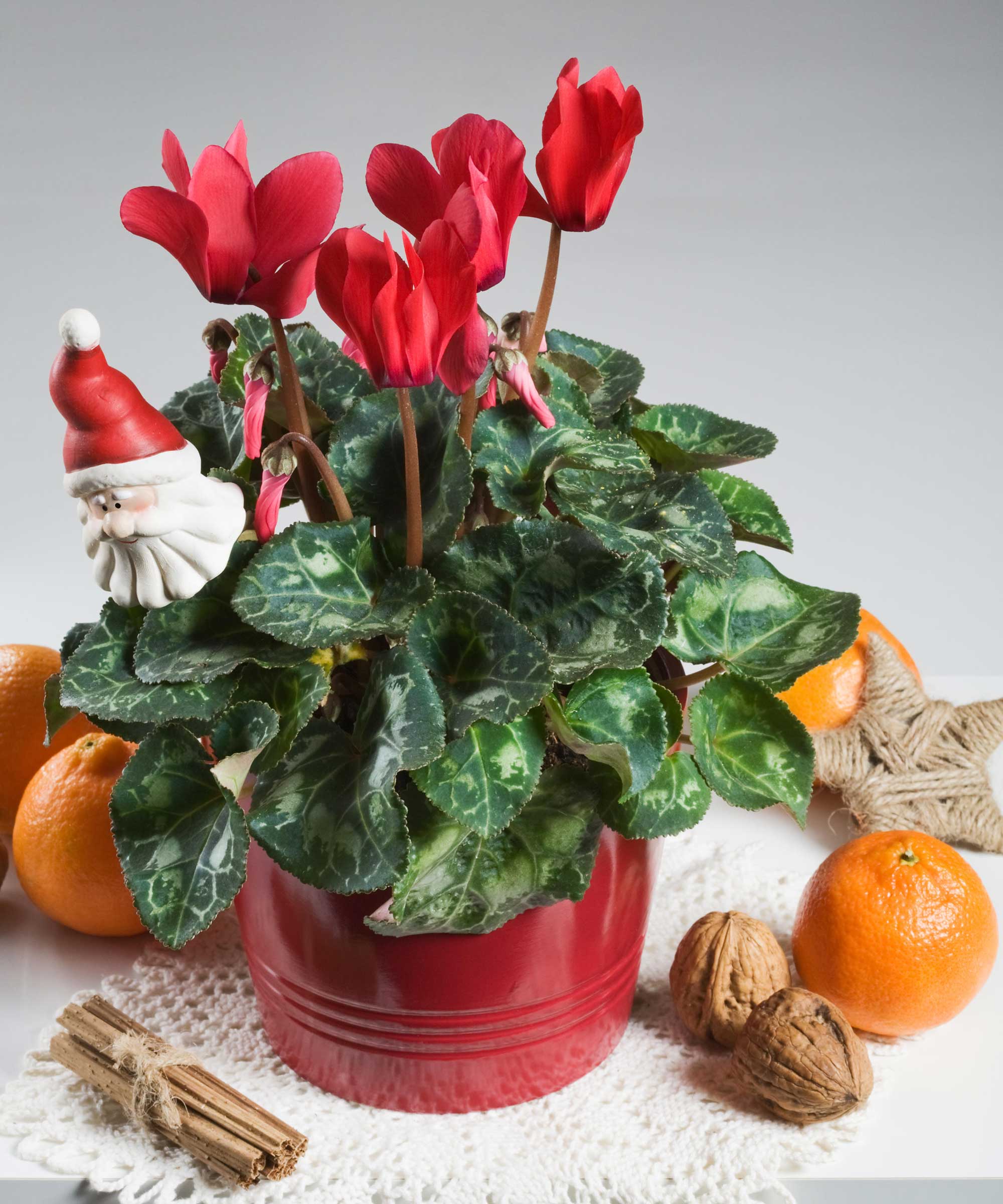
Cyclamen come in a wide range of stunning colors, so you can find one to suit your interior
Another Christmas classic, cyclamen plants come in a range of colors as well as the more traditional red. The bright blooms of the larger, showier ones, including pale frilled petals inked with pink, are a real winner. The flowers sit above layers of attractive marble-patterned foliage which is a pretty thing in itself.
Water from the base, and allow them to dry out each time, as overwatering can be especially damaging to them. Put them in a cool, bright spot away from sunlight and radiators.
To remove fading flowers from cyclamen, twist stems through a half circle and tweak out cleanly.
9. Citrus plants
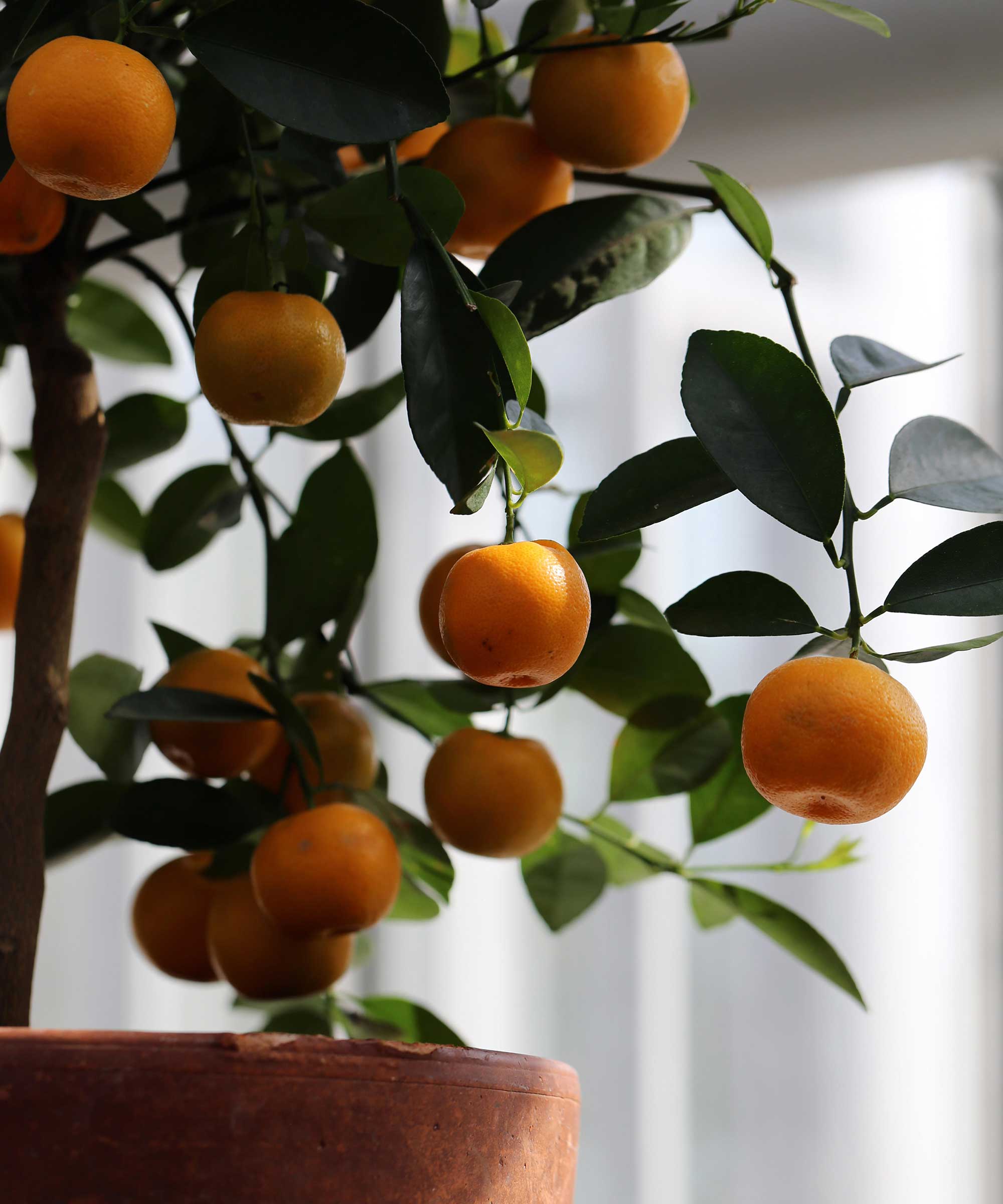
Try adding a tangerine tree to your conservatory
Citrus plants are on Squire's Garden Centres' list for the best indoor Christmas plants, and we agree – whether that's limes, lemons, or oranges.
With their waxy, dark green leaves and brightly-colored fruit, they're a perfect addition for a bountiful display. Plus, you'll be treated to sweet-smelling blossom, too.
They need plenty of light, so a conservatory is ideal. Water freely in summer, but in winter, only water when the soil is partially dry – overwatering throughout the colder months is a common problem, explains the RHS. They do like humidity though, so mist them regularly. Feed with a specific citrus fertilizer throughout winter, and a high nitrogen one from spring to mid-autumn.
In summer, you can even move them outdoors to brighten up your container gardening ideas, just be sure to bring them back in again before the temperature drops.
10. Gardenia
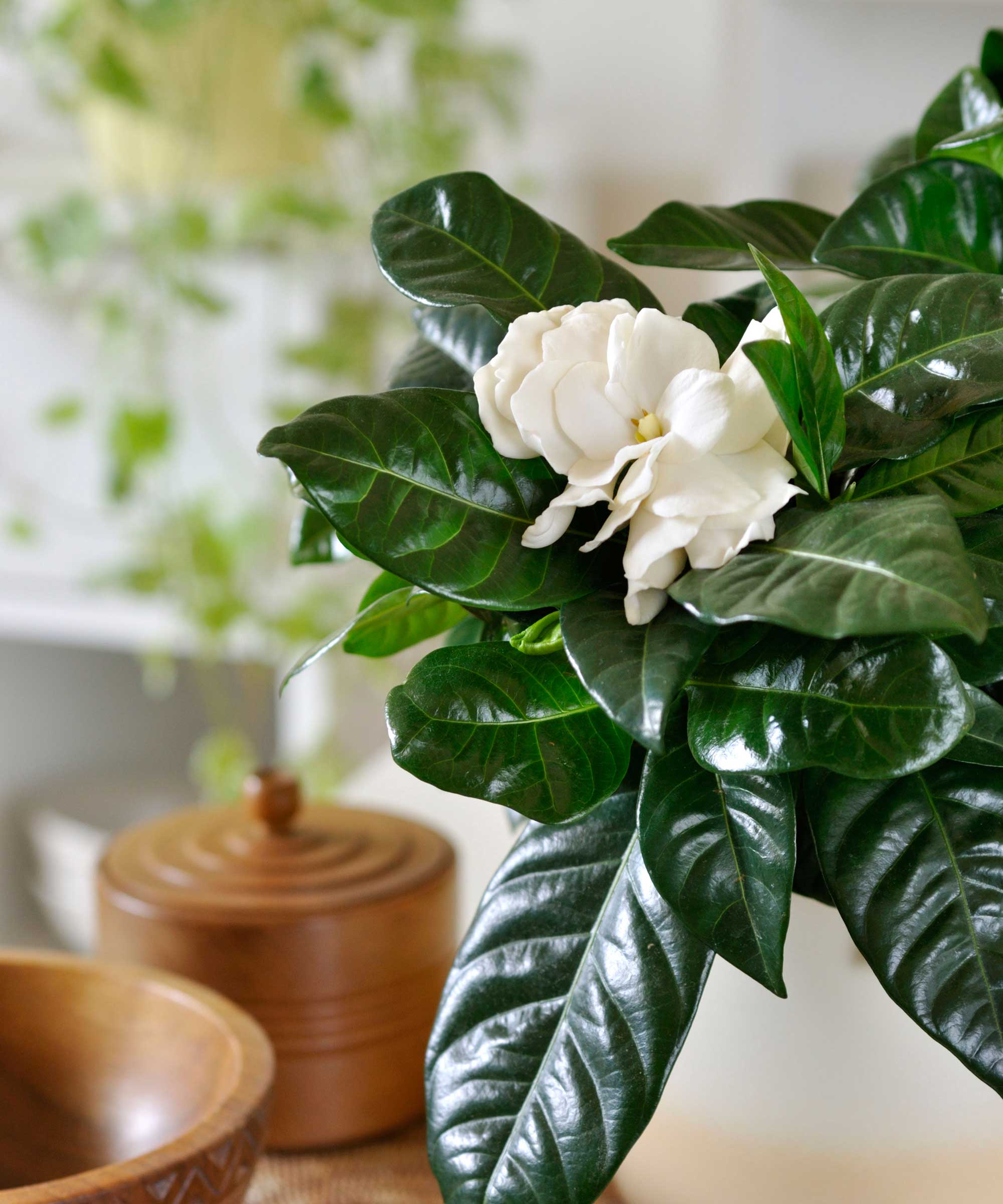
Gardenia may take a little more looking after, but the rewards of stunning blooms are worth the effort
Grown for their attractive glossy foliage and highly scented, waxy-textured flowers, choosing one of these will add an extra special touch to the festive decorations.
Although considered difficult, they're so worth it. Stand the pot on a saucer of gravel, and don't let the compost dry out. Use rainwater wherever possible but make sure it's at room temperature. Mist the leaves frequently, but not when they're in flower as this can discolor them. Feed with a balanced fertilizer occasionally.
Where should you put indoor Christmas plants?
You need to think carefully about finding the best spot for your Christmas plants. A bright windowsill might seem like the logical place and can work well. However, if it's draughty, or if there's a radiator underneath, temperatures can fluctuate around this spot which makes life hard for plants.
Avoid draughts and hot spots near other radiators, or fires, too. Instead, display them somewhere that's bright yet maintains a steady temperature.
For plants that prefer humid, tropical conditions, bathrooms can work particularly well – our guide to the best plants for bathrooms has ideas for all year-round greenery.
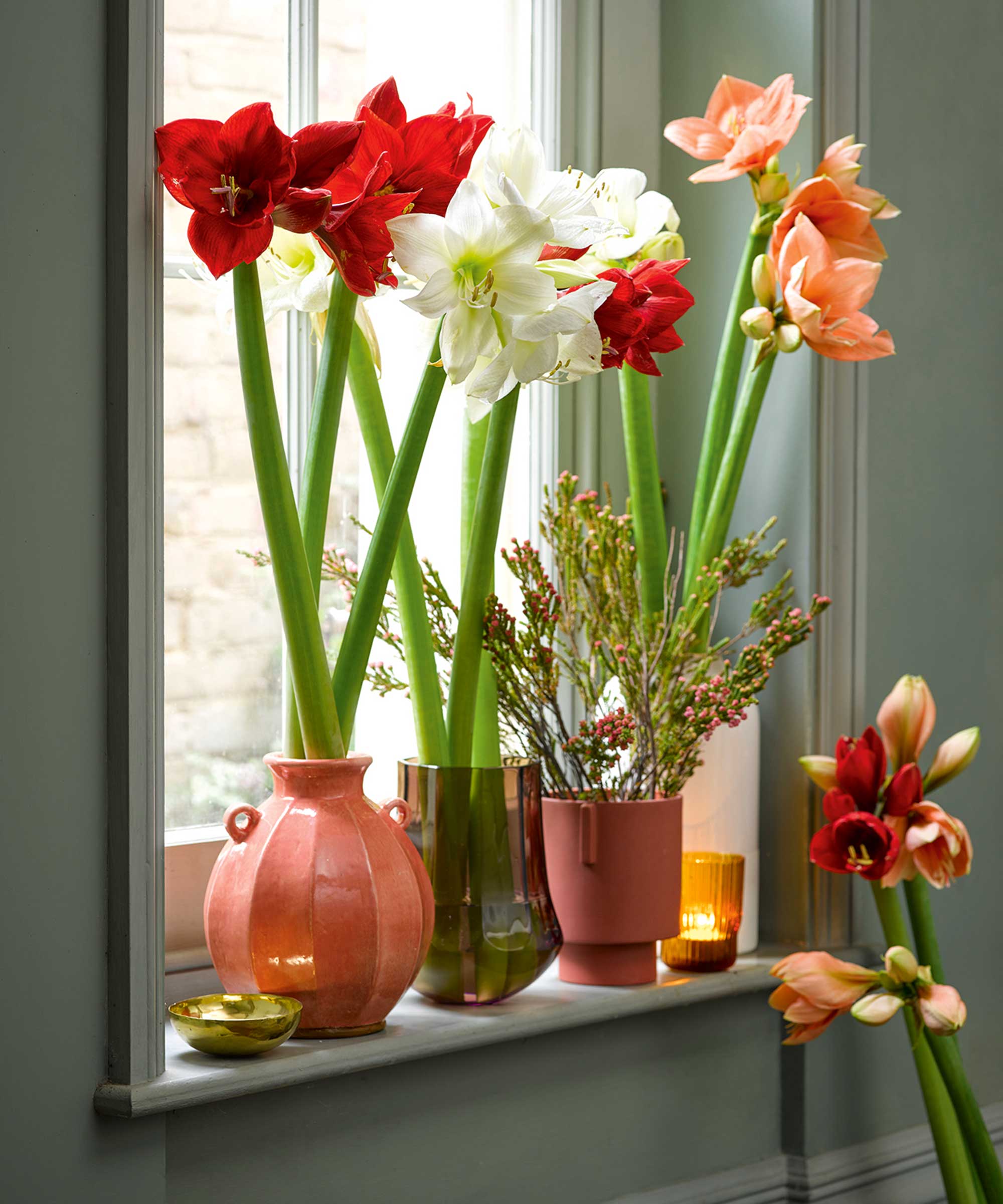
Christmas plants can thrive along a windowsill, as long as it isn't too draughty or above a source of heat
How much should you water your Christmas plants?
Overwatering is a common mistake when it comes to indoor plant ideas – Christmas plants included – as it can lead to rot.
If the compost is dry, stand the pot in a couple of inches of water for five minutes or so, then remove and allow to drain.
Improve humidity levels by standing pots on gravel-filled saucers topped with water, making sure the bottom of the pot isn't submerged. Group houseplants together too, as this will raise humidity levels. Regular misting will also help.
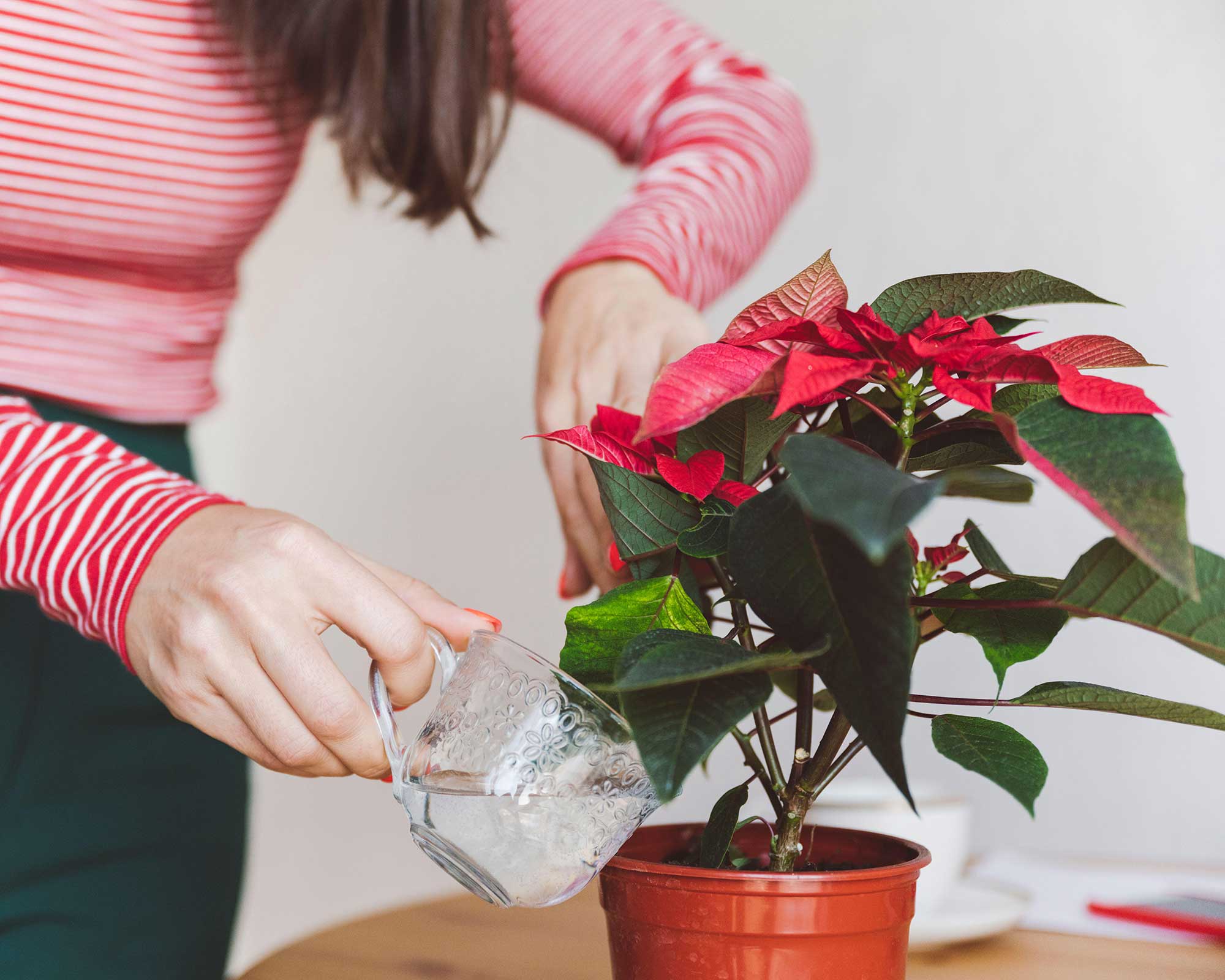
Be careful not to overwater your houseplants
What should you do with your Christmas plants after the holidays?
While some of the plants on our list can be encouraged to bloom again next year, not everything is designed to last.
Paperwhite narcissi, for example, are best enjoyed then placed on the compost heap. They are tender, so won't survive outdoors, and it would be a few years before they could bulk up sufficiently to flower again anyway.
For the ones that do repeat flower, a period of dormancy is often required, whereby the plants are placed somewhere dark and cool with little water. Our guide on how to make a Christmas cactus bloom has more info.

Lifestyle journalist Sarah Wilson has been writing about gardens since 2015. She's written for Gardeningetc.com, Livingetc, Homes & Gardens, Easy Gardens and Modern Gardens magazines. Having studied introductory garden and landscape design, she is currently putting the skills learned to good use in her own space where the dream is establishing a cutting garden.
